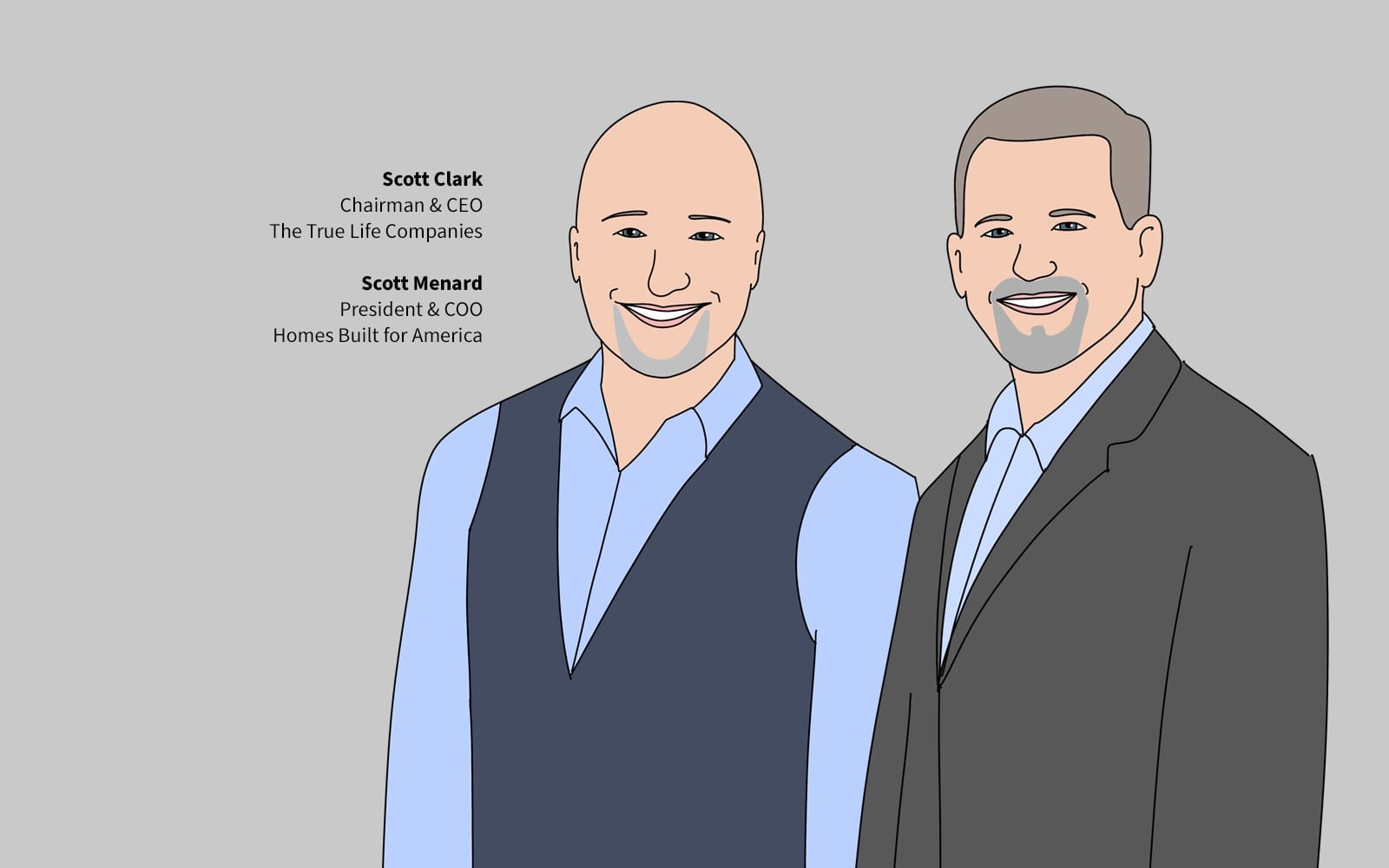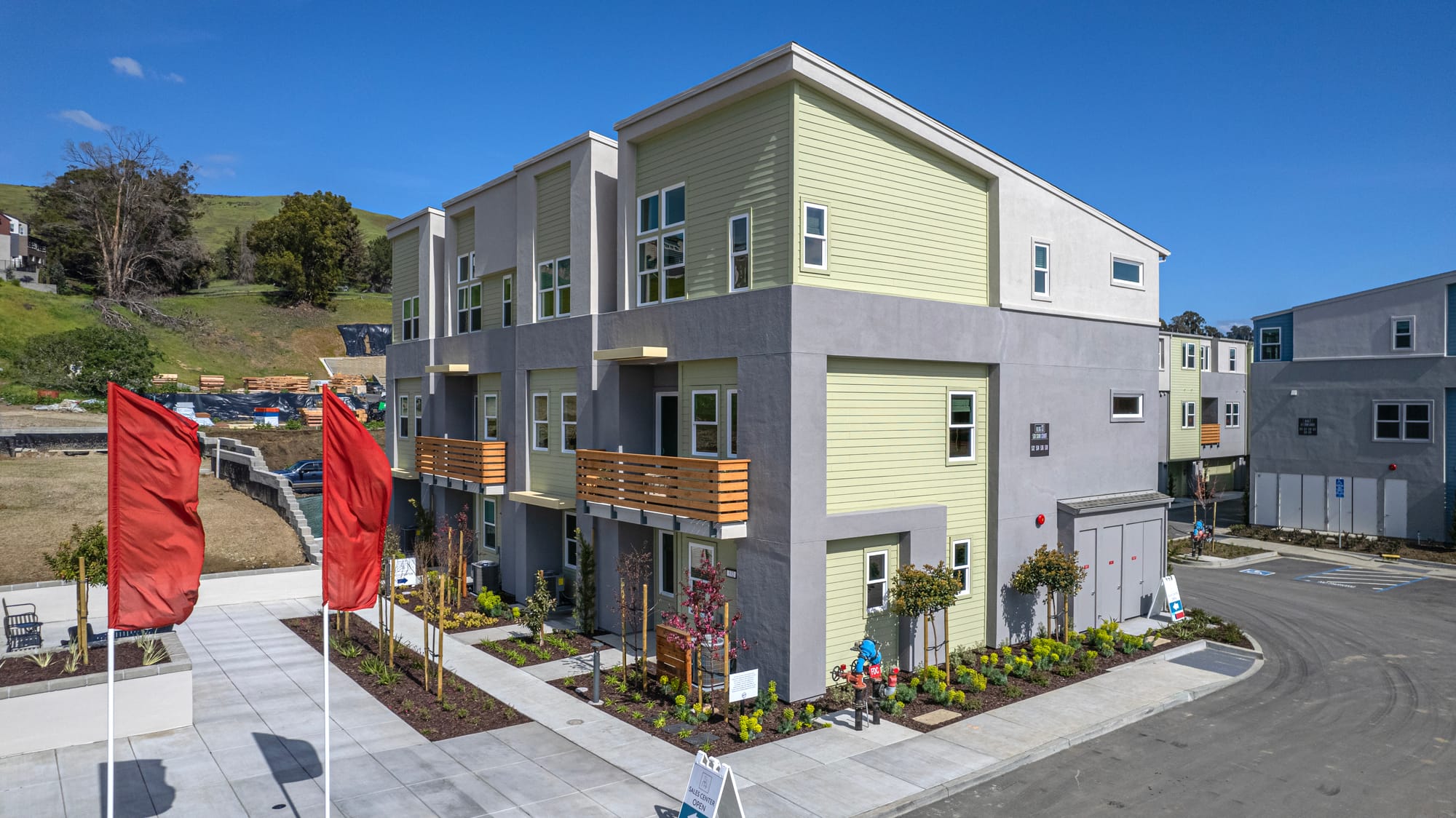Land
Homebuilding Startup Disrupts The Rules Of The Land Game
Homes Built for America, The True Life Companies' new homebuilding unit, is set to disrupt the market by taking on the same industry giants that have long relied on TTLC as a go-to land supplier.

In a move that’s sure to stir up the homebuilding landscape, The True Life Companies (TTLC) — one of the biggest land suppliers in the U.S. — has made a strategic leap, shifting from solely providing lots to launching its very own homebuilding division: Homes Built for America (HBFA).
Homes Built for America (HBFA) is making waves with its latest community openings in the San Francisco Bay Area, including developments in Hayward and Sunnyvale. These new communities — HayPark at SoMi, HayView at SoMi, Fusion Townhomes, and Vida Townhomes — add nearly 300 homes to a region where housing supply is notoriously tight.
With prices ranging from $599,000 to $1.8 million, HBFA is offering a mix of attainable homes for first-time buyers and entry-level homeowners. These projects mark the startup's rapid ascent as a key player in one of the nation’s most competitive housing markets, with over 113 homes anticipated to be delivered by year-end, generating revenues of about $130 million.

Looking ahead, HBFA has ambitious plans to expand beyond its Bay Area roots, with projections to build 300 homes by the end of 2025 and significant growth on the horizon. The company plans to strategically expand into Sacramento, Southern California, and Denver, with a goal to establish over 70 communities by 2030, generating more than $1 billion in revenue. This trajectory positions HBFA to grow into a national homebuilder, leveraging the existing 4,400 lots in its portfolio and adding hundreds more, while maintaining a strong focus on affordability and supply-constrained markets.
For anyone in the industry, this isn’t just another corporate maneuver. It signals a bigger shift in how developers think about land, homebuilding, and, ultimately, how they compete in a tight housing market.
What makes this pivot even more intriguing? TTLC has long been a trusted partner to some of the largest homebuilders in the nation — Toll Brothers, MDC/Richmond American, PulteGroup, Lennar, and others have bought over 3,800 lots from them. But now, by creating HBFA, TTLC is essentially becoming its own customer — and competitor.
That’s a big deal.
The Strategic Shift: From Land Supplier to Homebuilder
Let’s step back a bit.
This move didn’t happen overnight. In fact, according to Scott Menard, President and COO of HBFA, it took a decade of convincing to get Scott Clark, TTLC’s Chairman and CEO, to buy into the idea of expanding from land development into homebuilding. As Menard explains,
It took 10 years of beating up Scott Clark to finally get him to say yes to this.”
But once they were all in, the gears started turning quickly. And the timing? Some might say it was counterintuitive, considering Homes Built for America was born in the middle of the COVID-19 pandemic — a time when most businesses were pulling back. But for Clark and Menard, this was the moment to act.
While everyone else was on their heels, it was time for us to put our foot on the gas,” Clark shares.
Drawing inspiration from Warren Buffett’s mantra about leaning in when others are fearful, Clark saw a huge opportunity to fuel Menard’s passion for homebuilding and to turn TTLC into a more diversified player in the housing market.
By the end of this year, we’re going to deliver about 100 homes in the Bay Area,” Menard adds. “We’re now the 13th or 14th largest builder in the Bay Area, and nationally, we’ll be in the top 200. And we didn’t even exist three years ago.”
That rapid rise is significant, especially for a company with roots as deep in land development as TTLC. But the shift doesn’t come without some interesting dynamics. After all, HBFA is now competing with the same homebuilders who buy lots from TTLC. That’s a tightrope to walk.
Competing with Customers: A Risky Move That’s Paying Off
Here’s where it gets even more interesting. TTLC has long been one of the largest land suppliers in key markets like the SF Bay Area, Sacramento, Southern California, and Denver. Companies like Pulte, Lennar, and Toll Brothers have relied on them for lots in some of the country's most supply-constrained areas.
So, how do those same homebuilders feel now that Homes Built for America is stepping onto the playing field, not as a supplier, but as a competitor?
Turns out, it’s not as awkward as you’d think.
At first, we were concerned about how they’d react,” Menard admits. “Would they see us as competition? Would it hurt our relationships? But the truth is, they need the lots. They’re not worried about us building on some of our properties; they just need more land to build on.”
It’s a delicate balance but one that TTLC seems to be managing well. The company controls 4,400 lots across its portfolio, with plans to add 700 more by the end of the year. As Clark explains, this flexibility — being able to either sell lots or build on them — gives them leverage in a market where land is scarce and demand is high.
Having our own homebuilding company means we’re not at the mercy of the market,” Clark says. “If we don’t get the prices we expect or want, we can always build the homes ourselves.”
Building for the Future with a Capital-Light Model
What’s especially noteworthy about HBFA’s business model is its elegance and nimbleness. Unlike traditional builders, TTLC and HBFA don’t always own the land they control. Instead, they often tie up properties through option agreements, allowing them to remain flexible depending on market conditions.
This approach makes them resilient, even when the market tightens up. As Menard points out, that flexibility allows them to focus on delivering first-time buyers and attainable homes—something sorely lacking in markets like the Bay Area and Southern California.
In fact, Menard calls their strategic position “the three-bedroom developer.” Most of what they build is aimed at first-time buyers or people just stepping into homeownership. And while prices in Hayward may start at $599,000 and in Sunnyvale at $1.35 million, those price points are still considered “attainable” in a market where median home prices can easily soar past $2 million.
A Culture of Capability: How Their People Make the Difference
But there’s another story here — one that both Clark and Menard are particularly proud of. It’s about the culture they’ve created within Homes Built for America and The True Life Companies. For them, the people are just as important as the numbers.
Our company’s culture is our number one asset,” Menard says. “We’ve built a place where people want to be, and where they can thrive. We don’t hire just anyone. Our hiring process is a gauntlet—seven or eight interviews deep. But once you’re in, you’re part of the family.”
That family mentality, according to Scott Clark, is a big part of what makes HBFA work.
I’ve been running this company for 20 years, and in that time, I can count on one hand how many people have left. That’s because we’ve built a culture where people believe in what we’re doing—and that passion drives them.”
And it’s not just about keeping employees around. It’s about building a high-performance team that can execute in the face of enormous challenges. Both Scotts are adamant about hiring people who have that entrepreneurial spirit — people who are hungry to build something big but within a collaborative and supportive environment.
It’s like a cult, in the best way possible,” Menard quips. “People come in, and they don’t want to leave. Everyone’s excited about what we’re building, and they see themselves as part of something bigger than just their role.”
And the numbers reflect that. Since coming out of COVID in 2021, HBFA has gone from just 19 employees to a team of 66 across all divisions. That kind of growth isn’t just about scaling a business — it’s about fostering a culture where people want to grow with the company.
The Bigger Picture: What This Means for Homebuilding
The pivot by The True Life Companies and the rise of Homes Built for America are more than just business decisions — they’re reshaping the residential development landscape. By controlling both land supply and homebuilding, HBFA is positioning itself to make waves in a market already undergoing seismic shifts based on which players secure control of which lot positions, especially as it expands into regions like Sacramento and Denver.
It raises an important question for the broader industry: Will other land developers follow suit? As Menard points out, big builders have become “land-light” since the Great Recession, relying on companies like TTLC to supply them with lots. But what happens when those developers start keeping the land — and the profits — for themselves?
We’re building a forever company,” Clark says. “In five years, everyone will know Homes Built for America.”
MORE IN Land
Spring Land Slowdown Signals Deeper Strain For Homebuilders
A rare April dip in new home sales and starts — coupled with buyer hesitancy, incentives fatigue, and rising insurance costs — suggests deeper recalibration ahead for residential land strategy and valuation.
New Home–Landsea Deal Redraws Builder Power Map
A $1.2 billion private equity-backed merger creates a Top-25 national homebuilder — and signals four pivotal shifts redefining U.S. homebuilding's M&A battleground.
Out West: Legacy, Land Deals, Handshakes, And Long Games
Contributor Scott Finfer tells the story of a gas-station handshake deal that’s turning 1,000 acres of legacy ranchland into a patient, master-planned future — Texan in values, smart in strategy.
